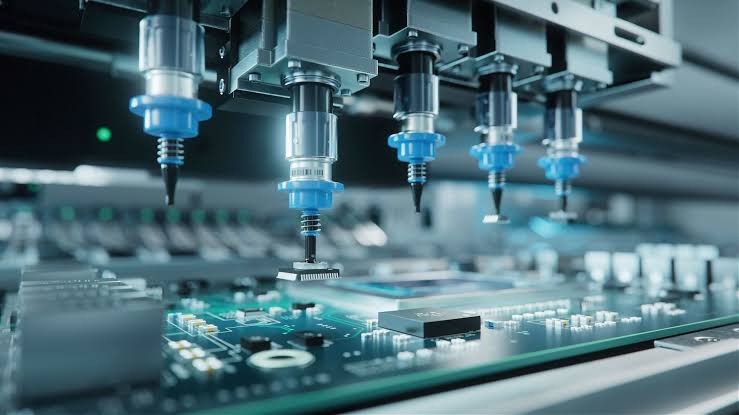In the competitive world of electronics manufacturing, product quality can make or break a company’s reputation and success. Maintaining stringent quality control in Printed Circuit Board Assembly (PCBA) is critical to ensure high-quality products. This article explores the significance of quality control in PCB assembly, highlighting the benefits of tailored PCB assembly and the advantages of working with Melbourne-based PCBA services.
Understanding PCB Assembly and Its Role in Electronics Manufacturing
Printed Circuit Board Assembly (PCBA) involves mounting electronic components onto a printed circuit board (PCB) to create functional circuits. This process is essential for producing various electronic devices, from consumer electronics to industrial machinery. The PCBA’s quality directly affects the final product’s performance, reliability, and longevity, making it a critical focus area for electronics manufacturers.
The Critical Role of Quality Control in PCB Assembly
The PCB assembly quality control (QC) ensures the boards meet the required specifications and standards. Effective QC processes help identify and rectify defects, prevent costly rework, and ensure the final product performs as intended. With rigorous quality control, manufacturers can avoid producing faulty products that can lead to customer satisfaction, increased returns, and damage to the brand’s reputation.
Critical Components of Effective Quality Control in PCB Assembly
Design Verification and Validation
The first step in quality control is verifying and validating the PCB design. This process involves checking the design for compliance with industry standards and customer specifications. Design verification ensures that the PCB layout is correct, the components are correctly placed, and no design flaws could affect performance. Validation tests the design under real-world conditions to ensure it functions as expected.
Component Inspection and Testing
Before assembly begins, all components must be inspected and tested to ensure they meet quality standards. This step involves checking for defects, verifying component specifications, and conducting electrical tests to confirm functionality. High-quality components are essential for reliable PCB assembly, and rigorous inspection helps prevent issues that could arise from using substandard parts.
Process Control and Monitoring
Continuous monitoring and control are crucial for maintaining quality during the assembly process. Process control involves setting parameters for soldering, placement, and other assembly steps to ensure consistency and precision. Monitoring systems track these parameters in real-time, allowing immediate adjustments if deviations occur. This proactive approach helps maintain high assembly standards and reduces the likelihood of defects.
Final Inspection and Functional Testing
Once the assembly is complete, the final inspection and functional testing are performed. This stage involves visual inspection to check for physical defects, such as solder bridges or misaligned components, and functional testing to verify the performance of the assembled PCB. Functional tests simulate the operational conditions of the final product to ensure it meets all specifications and performs reliably.
Benefits of Tailored PCB Assembly
Custom Solutions for Specific Needs
Tailored PCB assembly offers custom solutions that meet specific requirements and preferences. Manufacturers can design and assemble optimal PCBs for particular applications by working closely with clients, ensuring better performance and efficiency.
Enhanced Performance and Reliability
Customised PCB assembly allows for the selection of high-quality components and precise assembly techniques, enhancing performance and reliability. Tailored solutions can address unique challenges and requirements, providing a competitive edge in the market.
Cost Efficiency and Reduced Waste
Tailored PCB assembly can lead to cost savings by reducing waste and optimising the use of materials. By focusing on specific needs, manufacturers can minimise excess inventory and streamline production processes, leading to more efficient operations and lower costs.
Advantages of Melbourne-Based PCBA Services
Proximity and Communication
Choosing Melbourne-based PCBA services offers the advantage of proximity, facilitating better communication and collaboration. Working with local manufacturers allows face-to-face meetings, quicker response times, and a deeper understanding of project requirements.
Compliance with Local Standards
Melbourne-based PCBA manufacturers are subject to local standards and regulations, ensuring high-quality and compliant products. These manufacturers are familiar with the specific requirements of the Australian market, providing confidence in the quality and reliability of their services.
Supporting the Local Economy
Opting for local PCBA services supports the Melbourne economy and promotes sustainable business practices. Working with local manufacturers reduces transportation costs and environmental impact, contributing to a more sustainable supply chain.
Conclusion
Quality control in PCB assembly is a critical aspect of electronics manufacturing. It ensures that products meet high standards of performance, reliability, and safety. By implementing effective quality control processes, manufacturers can identify and rectify defects, optimise production, and deliver superior products to their customers.
Investing in tailored PCB assembly offers numerous benefits, including custom solutions, enhanced performance, and cost efficiency. Partnering with Melbourne-based PCBA services provides additional advantages, such as better communication, compliance with local standards, and support for the local economy.
Choosing the proper manufacturer and prioritising quality control in PCB assembly are essential for success in the competitive electronics market. By focusing on these critical aspects, manufacturers can ensure their products meet the highest standards and deliver exceptional value to their customers.





